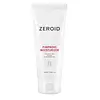What's inside
What's inside
 Key Ingredients
Key Ingredients

 Benefits
Benefits

 Concerns
Concerns

 Ingredients Side-by-side
Ingredients Side-by-side

Water
Skin ConditioningJasminum Sambac Flower Water
PerfumingSqualane
EmollientGlycerin
HumectantSodium Polyacrylate
AbsorbentButyrospermum Parkii Butter
Skin ConditioningSophora Flavescens Root Extract
AntioxidantInositol
HumectantScoparia Dulcis Extract
Skin ConditioningPropanediol
SolventPanthenol
Skin ConditioningRhus Glabra Bark/Berry/Root Extract
AntiseborrhoeicAllantoin
Skin ConditioningTocopherol
Antioxidant1,2-Hexanediol
Skin ConditioningEctoin
Skin ConditioningBeta-Glucan
Skin ConditioningSodium Hyaluronate
HumectantGlyceryl Glucoside
HumectantCaprylhydroxamic Acid
Capryloyl Glycine
CleansingHydroxyacetophenone
AntioxidantPentylene Glycol
Skin ConditioningWater, Jasminum Sambac Flower Water, Squalane, Glycerin, Sodium Polyacrylate, Butyrospermum Parkii Butter, Sophora Flavescens Root Extract, Inositol, Scoparia Dulcis Extract, Propanediol, Panthenol, Rhus Glabra Bark/Berry/Root Extract, Allantoin, Tocopherol, 1,2-Hexanediol, Ectoin, Beta-Glucan, Sodium Hyaluronate, Glyceryl Glucoside, Caprylhydroxamic Acid, Capryloyl Glycine, Hydroxyacetophenone, Pentylene Glycol
Water
Skin ConditioningGlycerin
HumectantCaprylic/Capric Triglyceride
Masking1,2-Hexanediol
Skin ConditioningPolyglyceryl-10 Distearate
EmulsifyingStearic Acid
CleansingTocopherol
AntioxidantSodium Polyacrylate
AbsorbentAllantoin
Skin ConditioningMyristoyl/Palmitoyl Oxostearamide/Arachamide Mea
Skin ConditioningOleamide Mea
Carbomer
Emulsion StabilisingArginine
MaskingPhytosterols
Skin ConditioningDimethyl Isopropanolamine
BufferingSodium Hyaluronate
HumectantBeta-Glucan
Skin ConditioningWater, Glycerin, Caprylic/Capric Triglyceride, 1,2-Hexanediol, Polyglyceryl-10 Distearate, Stearic Acid, Tocopherol, Sodium Polyacrylate, Allantoin, Myristoyl/Palmitoyl Oxostearamide/Arachamide Mea, Oleamide Mea, Carbomer, Arginine, Phytosterols, Dimethyl Isopropanolamine, Sodium Hyaluronate, Beta-Glucan
 Reviews
Reviews

Ingredients Explained
These ingredients are found in both products.
Ingredients higher up in an ingredient list are typically present in a larger amount.
1,2-Hexanediol is a synthetic liquid and another multi-functional powerhouse.
It is a:
- Humectant, drawing moisture into the skin
- Emollient, helping to soften skin
- Solvent, dispersing and stabilizing formulas
- Preservative booster, enhancing the antimicrobial activity of other preservatives
Allantoin is a soothing ingredient known for its protective and moisturizingg properties. Because of this, it is often added to products with strong active ingredients.
Studies show higher concentrations of this ingredient can promote wound healing.
Though it can be derived from the comfrey plant, allantoin is produced synthetically for cosmetic products to ensure purity.
Learn more about AllantoinBeta-Glucan is a polysaccharide. It can be derived from the cell walls of seaweed, oats, yeast, and fungi. It hydrates the skin and helps boost your skin's natural barrier.
As an antioxidant, beta-glucan helps fight free-radicals. Free-radicals are molecules that may damage your skin cells, such as pollution.
Studies show this ingredient may be an effective wrinkle reducer as it can deeply penetrate into skin. It has also been show to help with wound healing.
Learn more about Beta-GlucanGlycerin is already naturally found in your skin. It helps moisturize and protect your skin.
A study from 2016 found glycerin to be more effective as a humectant than AHAs and hyaluronic acid.
As a humectant, it helps the skin stay hydrated by pulling moisture to your skin. The low molecular weight of glycerin allows it to pull moisture into the deeper layers of your skin.
Hydrated skin improves your skin barrier; Your skin barrier helps protect against irritants and bacteria.
Glycerin has also been found to have antimicrobial and antiviral properties. Due to these properties, glycerin is often used in wound and burn treatments.
In cosmetics, glycerin is usually derived from plants such as soybean or palm. However, it can also be sourced from animals, such as tallow or animal fat.
This ingredient is organic, colorless, odorless, and non-toxic.
Glycerin is the name for this ingredient in American English. British English uses Glycerol/Glycerine.
Learn more about GlycerinSodium Hyaluronate is hyaluronic acid's salt form. It is commonly derived from the sodium salt of hyaluronic acid.
Like hyaluronic acid, it is great at holding water and acts as a humectant. This makes it a great skin hydrating ingredient.
Sodium Hyaluronate is naturally occurring in our bodies and is mostly found in eye fluid and joints.
These are some other common types of Hyaluronic Acid:
Learn more about Sodium HyaluronateSodium Polyacrylate is the sodium salt of polyacrylic acid. It is used as an absorber, emollient, and stabilizer.
This ingredient is a super-absorbent polymer - meaning it can absorb 100 to 1000 times its mass in water. As an emollient, Sodium Polyacrylate helps soften and soothe skin. Emollients work by creating a barrier to trap moisture in. This helps keep your skin hydrated.
Tocopherol (also known as Vitamin E) is a common antioxidant used to help protect the skin from free-radicals and strengthen the skin barrier. It's also fat soluble - this means our skin is great at absorbing it.
Vitamin E also helps keep your natural skin lipids healthy. Your lipid skin barrier naturally consists of lipids, ceramides, and fatty acids. Vitamin E offers extra protection for your skin’s lipid barrier, keeping your skin healthy and nourished.
Another benefit is a bit of UV protection. Vitamin E helps reduce the damage caused by UVB rays. (It should not replace your sunscreen). Combining it with Vitamin C can decrease sunburned cells and hyperpigmentation after UV exposure.
You might have noticed Vitamin E + C often paired together. This is because it is great at stabilizing Vitamin C. Using the two together helps increase the effectiveness of both ingredients.
There are often claims that Vitamin E can reduce/prevent scarring, but these claims haven't been confirmed by scientific research.
Learn more about TocopherolWater. It's the most common cosmetic ingredient of all. You'll usually see it at the top of ingredient lists, meaning that it makes up the largest part of the product.
So why is it so popular? Water most often acts as a solvent - this means that it helps dissolve other ingredients into the formulation.
You'll also recognize water as that liquid we all need to stay alive. If you see this, drink a glass of water. Stay hydrated!
Learn more about Water